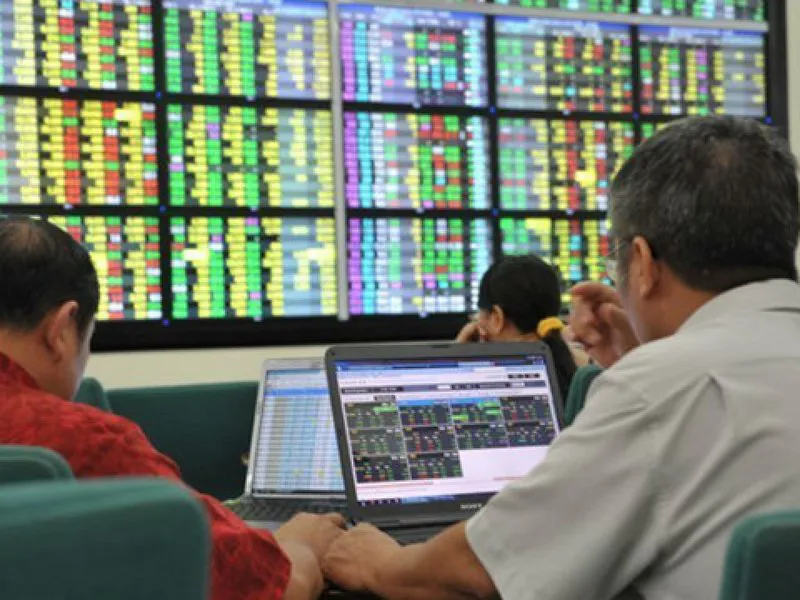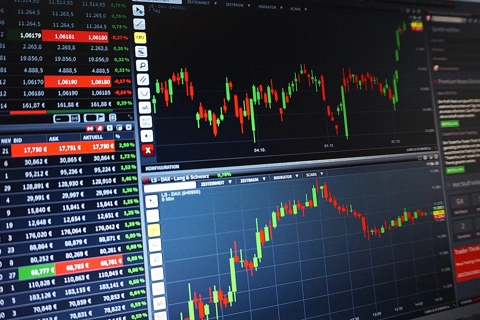Vietnam’s benchmark VN-Index may rise 15% in 2020: VinaCapital
Favorable conditions in 2020 are expected to help facilitate the elevation of Vietnam’s stock market classification from a “Frontier Market” market to an “Emerging Market” by MSCI.
Vietnam’s benchmark VN-Index is likely to go up by 10 – 15% in 2020, thanks to an ideal environment of high GDP growth and modest inflation, according to VinaCapital, Vietnam’s major asset management firm.
| Illustrative photo. |
“Vietnam’s GDP will almost certainly continue growing at a 6.7-6.9% rate next year, while inflation should end 2020 at around 3% (although CPI is likely to peak above 4% yoy in 1Q20 due to the African Swine Fever epidemic)”, said the firm in its latest “Looking ahead 2020” report.
Other factors include a favorable global backdrop for frontier and emerging market stock prices, combined with the reasonable valuation of Vietnamese stock prices (forward price/earnings ratio (P/E) of 14x and 14% expected earnings per share (EPS) growth).
In addition to those, there is the possibility that sentiment could be further boosted if progress were to be made towards the development of a Non-Voting Rights Depository Receipt (NVDR) scheme which would enable foreign investors to more easily access individual Vietnamese stocks that currently do not have foreign ownership room available.
The development of such a scheme, comparable to the one that exists in Thailand, would help facilitate the elevation of Vietnam’s stock market classification from a “Frontier Market” market to an “Emerging Market” by MSCI, stated the report.
Top stock picks for investment in 2020
Vinacapital expected the earnings of listed banks are likely to grow by 23% in 2020, which is comparable to expected earnings growth in 2019.
“This will be driven by expected 13-14% system-wide credit growth next year (also comparable to 2019), which we expect to be driven by circa 30% growth in outstanding mortgages that account for nearly one-quarter of banks’ aggregate loan books,” it said.
In 2019, banks’ aggregate outstanding mortgages are likely to grow by 40% due to the relatively low penetration of mortgages in Vietnam, and because Vietnam’s largest real estate developer Vingroup has launched several large scale real estate developments that are comprised of thousands of apartments which are suitable for purchase by local, middle class homebuyers.
Meanwhile, for retailers, 2020 earnings growth should continue to be driven by both the continued emergence of a middle class in Vietnam, and by the displacement of “mom and pop” stores by large-scale chains, such as Mobile World or Phu Nhuan Jewelry.
The technology sector is dominated by leading local technology conglomerate FPT, which is trading at 9x Forward P/E versus 21% expected EPS growth in 2020. Over half of FPT’s earnings are derived from its software outsourcing business, which is expected to grow by more than 25% next year. Demand is coming from both foreign (especially Japanese) customers looking to optimize their IT spending and increasingly from local banks that are pursuing “fintech” and other technology initiatives.
Vinacapital also highlighted the attractiveness of Vietnam’s leading steel maker Hoa Phat Group, which is trading at 7x Forward P/E versus 17% expected EPS growth, with growth driven by a near-doubling of the company’s steelmaking production in 2020.
The firm, however, remained cautious about the prospects for real estate stocks next year, given the on-going clamp down of new project approvals in Ho Chi Minh City. However, affordable housing developers Nam Long Group and Khang Dien Housing continue to be beneficiaries of the emergence of middle-class home buyers in Vietnam.
Meanwhile, the stock price of Vietnam’s leading conglomerate Vingroup continues to benefit from exchange traded fund (ETF) inflows given its high weighting in all of Vietnam’s major ETFs and stock market indexes, while its real estate development subsidiary Vinhomes benefits from the fact that it is one of the only such companies in the country to launch and sell large-scale projects.












